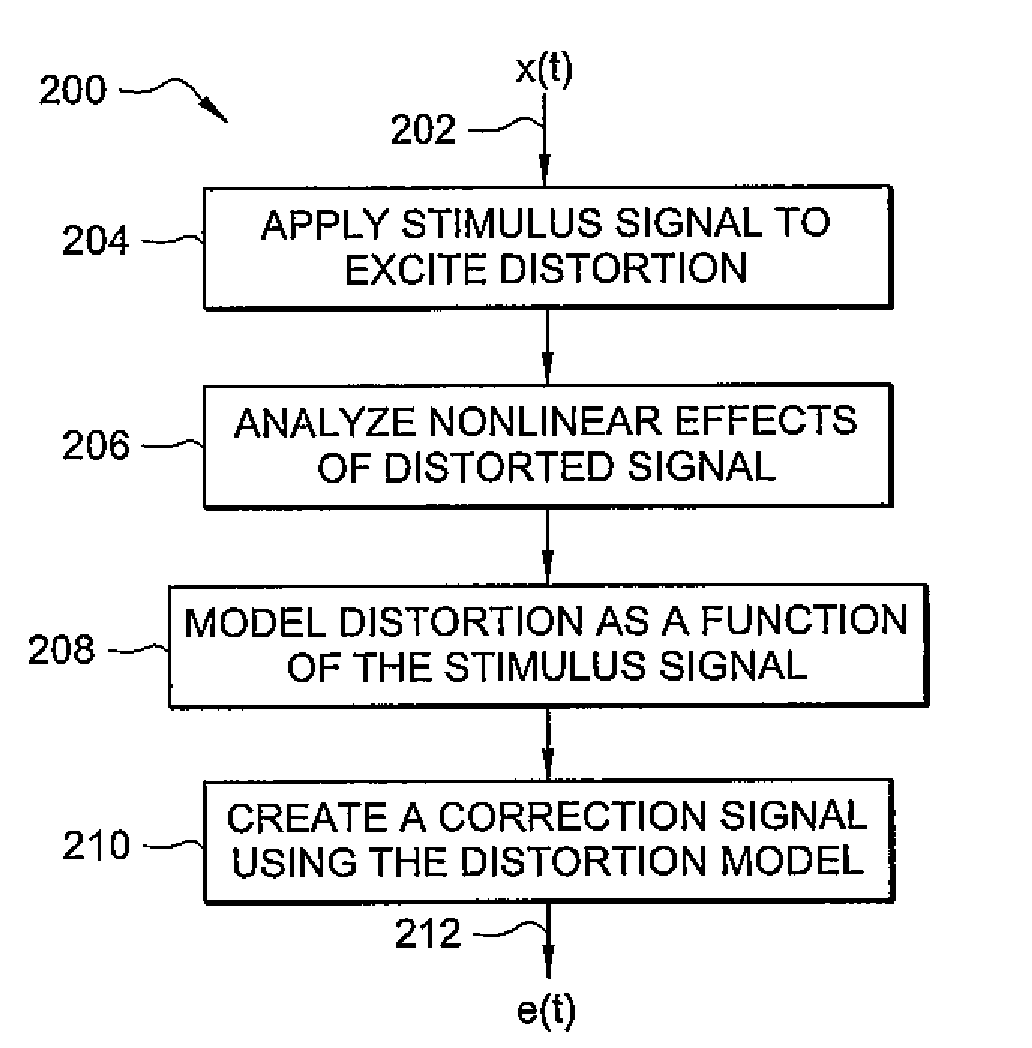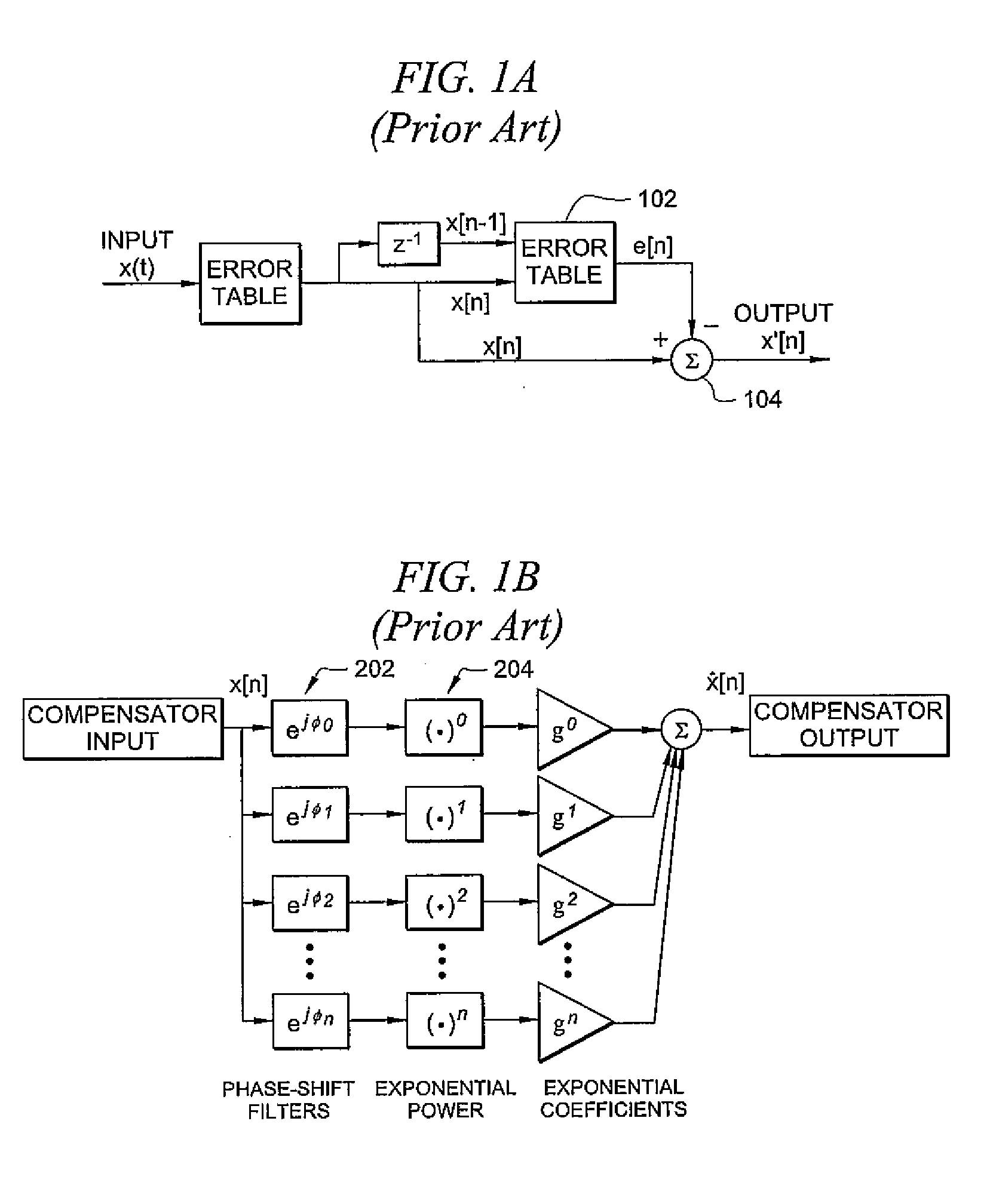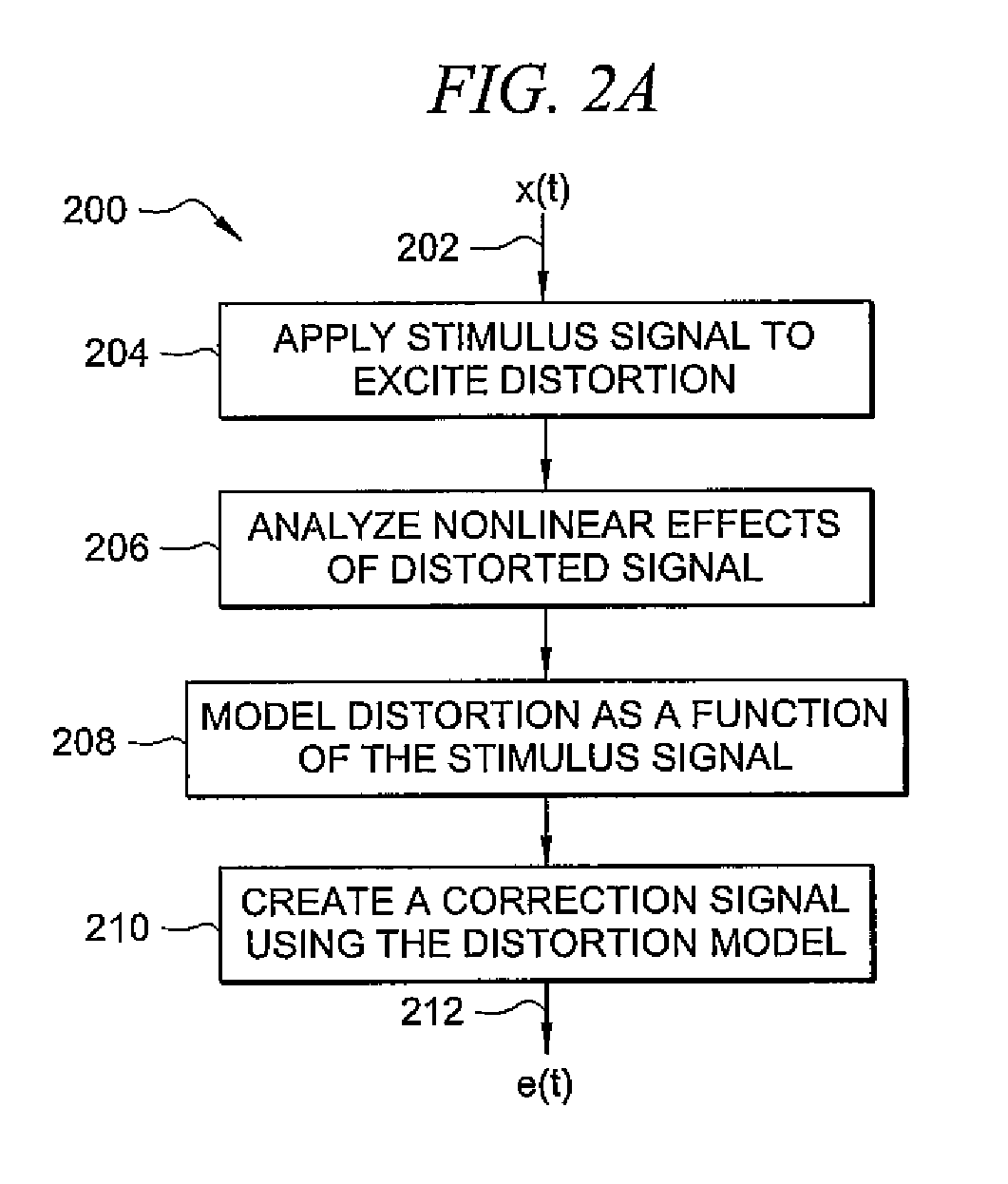System and method of digital linearization in electronic devices
- Summary
- Abstract
- Description
- Claims
- Application Information
AI Technical Summary
Benefits of technology
Problems solved by technology
Method used
Image
Examples
Embodiment Construction
[0041]FIG. 2A illustrates an exemplary method for reducing nonlinear signal distortion 200 of a primary signal x(t) 202 within an electronic device. It is noted that the primary signal 202 can be received by the electronic device at an input via a direct connection, RF connection, infra red transmission, or by any other means to receive a signal. The primary signal 202 may also have been generated by the electronic device, or propagating through as part of another process. It may also be advantageous to sample the primary signal with multiple analog to digital converters (ADC) in the case of primary signals propagating in an interleaved ADC system.
[0042]The method 200 applies a stimulus signal to excite distortion 204. The stimulus signal is applied to the electronic device and may take the form of one or more sinusoids, preferably a signal with the same statistical qualities of the typical primary signal, or may even be the primary signal itself. The use of a waveform, such as the ...
PUM
 Login to View More
Login to View More Abstract
Description
Claims
Application Information
 Login to View More
Login to View More - R&D
- Intellectual Property
- Life Sciences
- Materials
- Tech Scout
- Unparalleled Data Quality
- Higher Quality Content
- 60% Fewer Hallucinations
Browse by: Latest US Patents, China's latest patents, Technical Efficacy Thesaurus, Application Domain, Technology Topic, Popular Technical Reports.
© 2025 PatSnap. All rights reserved.Legal|Privacy policy|Modern Slavery Act Transparency Statement|Sitemap|About US| Contact US: help@patsnap.com



